
What is Amazon FBA?
Amazon FBA (Fulfillment by Amazon) lets you run an e-commerce business without touching inventory. You send products to Amazon’s warehouses, and they handle storage, packing, shipping, customer service, and returns. It’s the infrastructure that powers 82% of Amazon sellers—but success requires understanding the costs, compliance requirements, and strategic changes reshaping the program.
Here’s the reality: FBA gives you access to 200+ million Prime members who convert at 74% compared to just 13% for non-Prime listings. That Prime badge isn’t just a perk—it’s essential for competitive success. But Amazon is making major changes. Starting January 1, 2026, they’re completely eliminating all prep and labeling services, forcing every seller to find new solutions for getting inventory FBA-ready.
This guide covers everything you need to know: how FBA actually works, the three ways sellers profit, the true cost structure, why the January 2026 deadline matters, and how to prepare your business for FBA’s next chapter.
Jump right in: Table of Contents
How Amazon FBA Works (And Why Sellers Use It)
Amazon operates hundreds of fulfillment centers strategically located near major population centers across the United States. When you enroll products in FBA, you ship inventory to these warehouses where Amazon stores it until customers order.
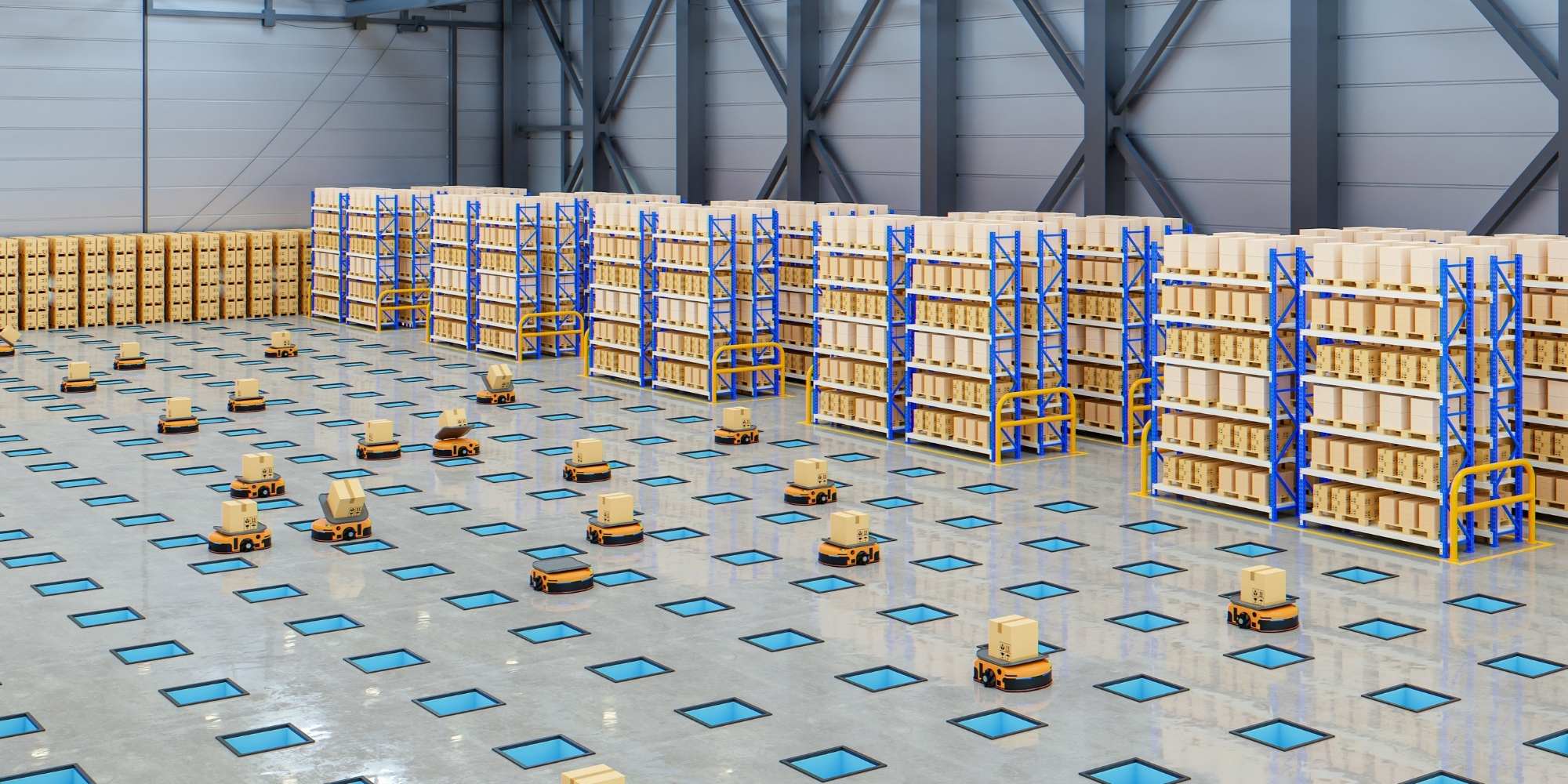
The moment someone clicks “Buy Now,” Amazon’s system automatically picks your product from warehouse shelves, packs it in Amazon-branded boxes, and ships it through their logistics network—often delivering within 1-2 days for Prime members.
What Amazon handles for you:
- Warehousing and inventory storage
- Order picking and packing
- Shipping and delivery
- Customer service inquiries
- Returns processing and refunds
- Difficult customer situations
You focus exclusively on sourcing products, managing inventory levels, optimizing listings, and growing your business.
The Alternative (And Why Most Sellers Avoid It)
Fulfilling orders yourself means renting warehouse space, buying packing materials, printing shipping labels, making daily post office runs, answering tracking questions, and processing returns. A single high-volume day could mean packing 100+ orders manually.
The economics favor FBA: Amazon ships orders 70% cheaper per unit than premium carrier alternatives. Their massive scale creates efficiencies individual sellers cannot replicate. More importantly, the Prime badge unlocks Amazon’s most valuable customers—members who specifically filter for Prime products and often abandon carts when fast shipping isn’t available.
Three Ways Sellers Make Money with FBA

Private Label: Build Your Own Brand
Private label represents the most lucrative approach, used by 54% of FBA sellers. You source generic products from manufacturers (typically via Alibaba), customize them with your own branding and packaging, and create unique listings where you’re the exclusive seller.
Example economics: A yoga mat costs $8 to manufacture in China and retails for $30 on Amazon. After Amazon’s 15% referral fee ($4.50), FBA fulfillment fees (~$5), advertising costs, and landed cost of goods, you might net $6-8 per sale—a 20-25% margin.
Pros: Highest margins, complete Buy Box control, builds a sellable business asset worth 2-4× annual profit
Cons: Requires $2,000-$5,000+ startup capital, 3-6 month launch timeline, highest complexity
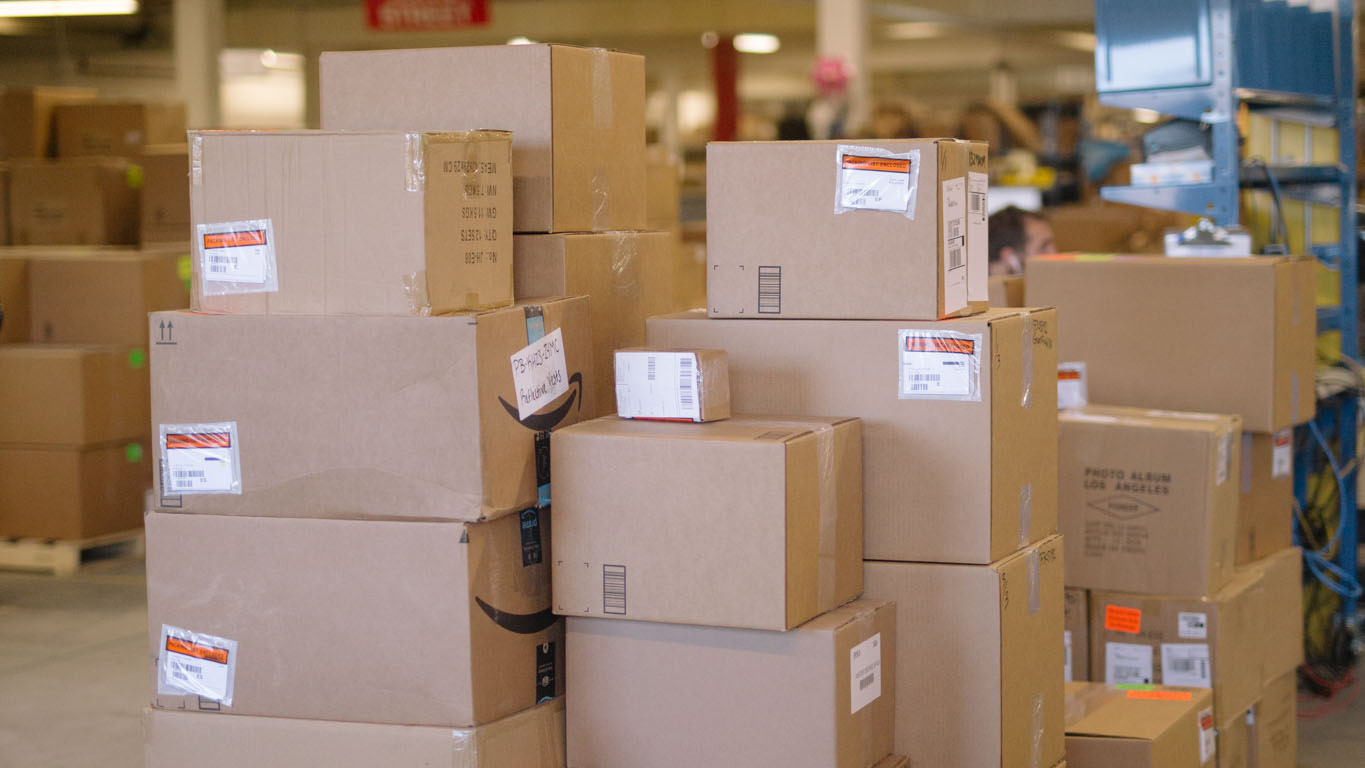
Wholesale: Resell Established Brands
Wholesale involves buying established branded products in bulk from distributors or manufacturers, then reselling on Amazon’s existing product pages. You compete with other sellers for the Buy Box, which keeps margins thinner (30-50% of retail), but you’re selling proven products with existing demand.
Pros: Lower risk than private label, proven products, faster to start
Cons: Thinner margins, competition for Buy Box, price pressure from other sellers

Retail Arbitrage: Start with Small Capital
Retail arbitrage offers the lowest barrier to entry. Scan clearance sections at major retailers using the Amazon Seller app, buying discounted products and reselling them for profit. A stapler purchased for $2 on clearance might sell for $8.99 on Amazon. After fees, you pocket $2-3 per unit.
Pros: Start with just $500-$1,000, learn Amazon’s systems while generating cash flow
Cons: Impossible to scale meaningfully, limited by physical store inventory and your time
The bottom line: 58% of sellers achieve profitability within their first year, with 86% of FBA sellers reporting overall profitability. Of those profitable sellers, 57% maintain margins above 10%, while 28% achieve margins exceeding 20%.
Ready to Give FBA a Try? Don't Forget the Prep!
Partnering with a 3PL like eFulfillment Service means you can focus on growing your business while we handle the prep. Request a Free Quote Today!
Why the January 1, 2026 Deadline Changes Everything
On July 28, 2025, Amazon announced they’re completely discontinuing all FBA prep and labeling services in the United States starting January 1, 2026.
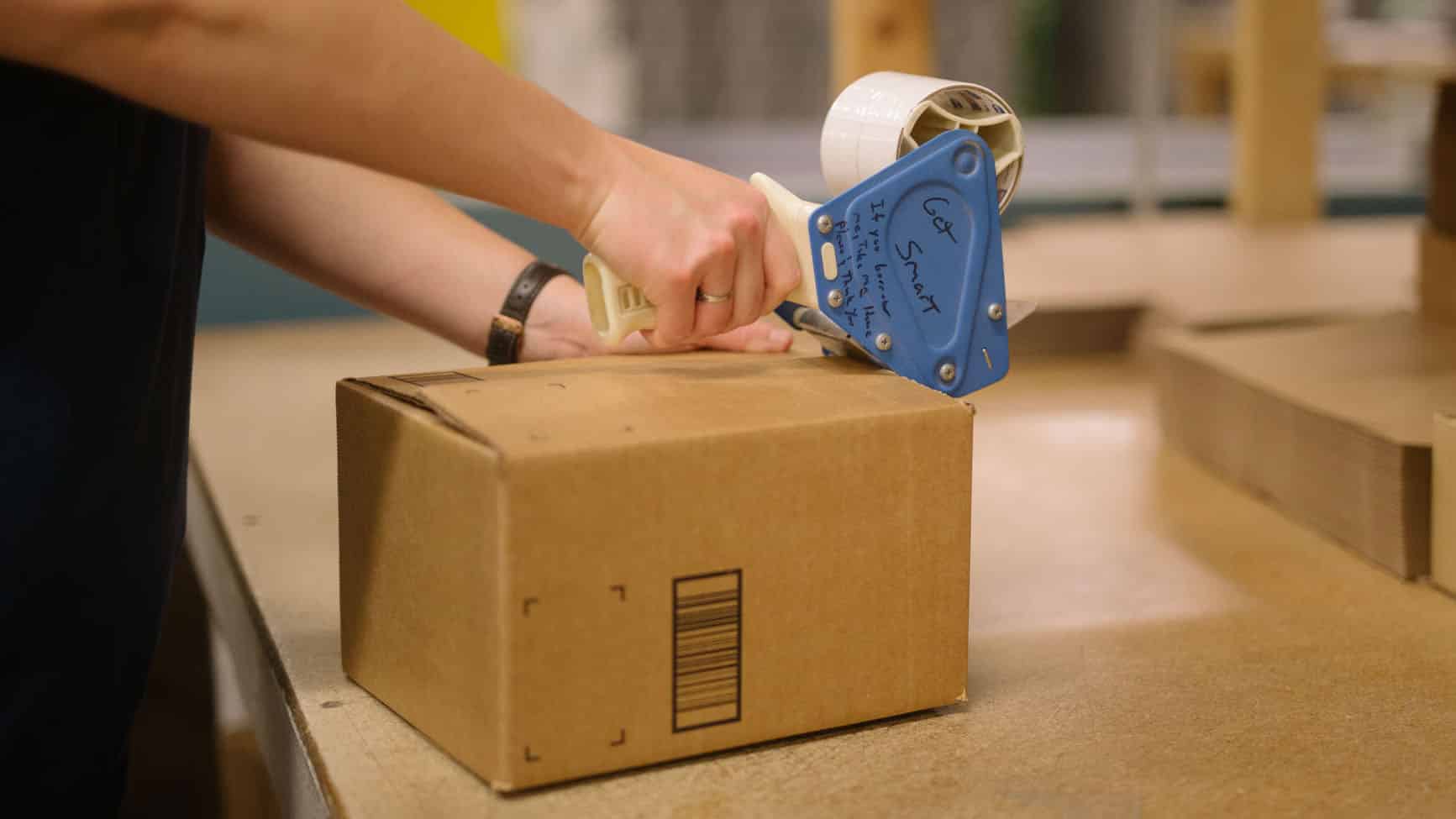
What’s ending:
- No more $0.55-per-unit labeling service
- No more poly-bagging, bubble wrapping, or repackaging
- No more safety net for prep mistakes
Every product arriving at fulfillment centers must be 100% compliant and shelf-ready. Shipments created before January 1, 2026 still receive prep services even if they arrive later. But anything created on or after that date must arrive fully prepped.
The Consequences of Non-Compliance
Shipments without proper prep face:
- Zero reimbursement if items are damaged or lost
- Immediate disposal at your expense (up to $6.90 per cubic foot)
- Return shipping costs ($50-200+ per shipment)
- Processing delays of weeks
- Escalating inbound defect fees
Those inbound defect fees jump dramatically: from current rates of $0.02-$0.07 per unit to $0.32-$1.74 for standard-size products and up to $5.72 for bulky items. Repeated violations trigger account health issues, listing suppression, and potential account suspension.
Your Three Options
- In-house prep – Requires thermal printers, training, workspace, and labor (learn about the risks of managing FBA prep in-house)
- Supplier prep – Arrange for manufacturers to prep products before shipping
- Third-party prep centers – Professional services handle everything (optimal for most sellers)
You have approximately 60 days to finalize your solution. Testing new processes during Q4 is risky—establish your prep arrangement now and submit final Amazon-prepped shipments by mid-December 2025.
Managing FBA doesn’t have to be a hassle.
Partnering with a 3PL like eFulfillment Service means you can focus on growing your business while we handle the prep. Request a Free Quote Today!
What Makes FBA Prep So Complex (And Critical)
FBA prep goes far beyond slapping labels on boxes. Amazon’s sophisticated logistics network processes millions of items daily, and their strict requirements ensure products survive high-speed conveyor belts, robotic handling, and automated sorting. Understanding FBA prep best practices is essential for avoiding costly mistakes.
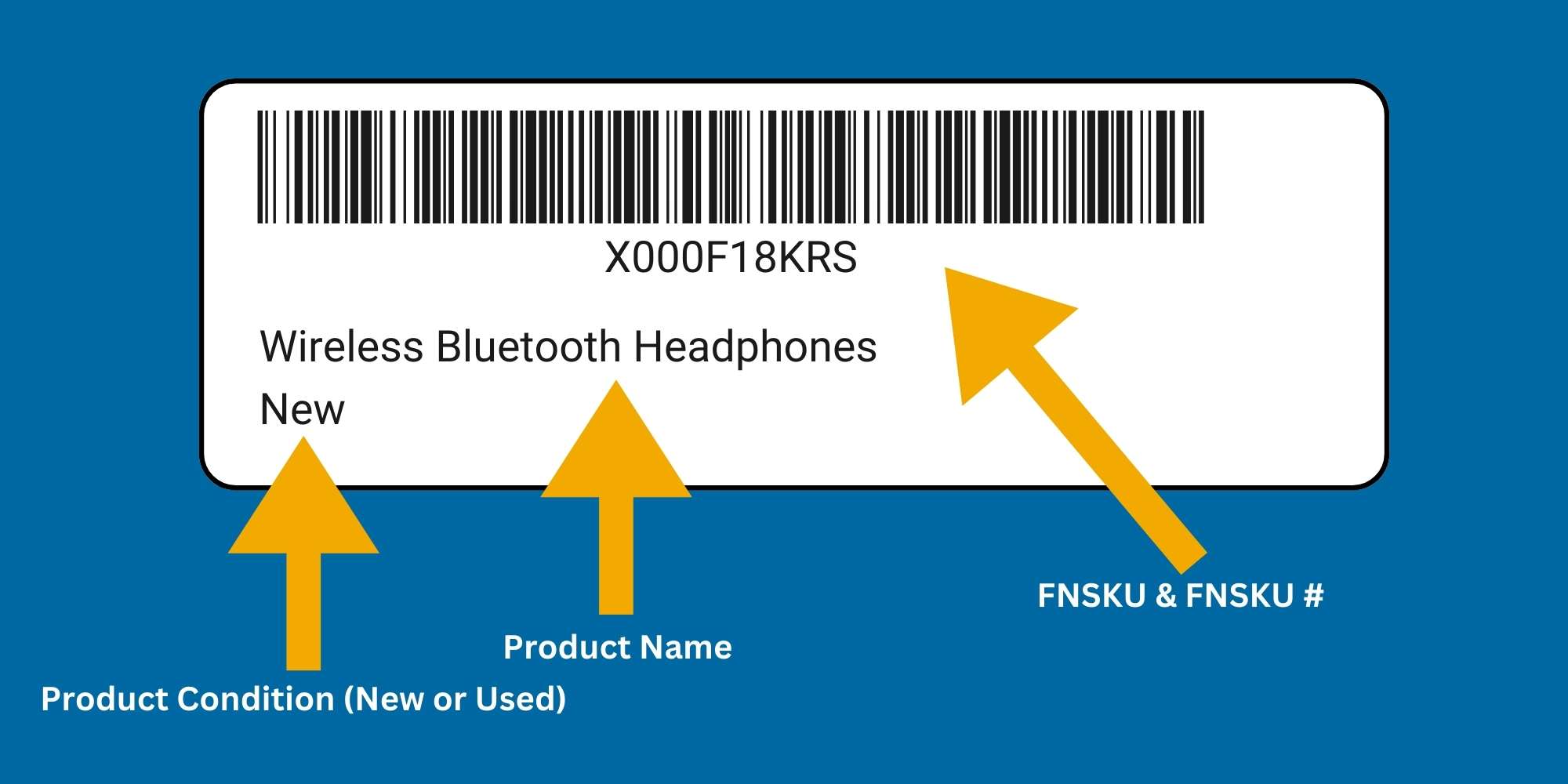
FNSKU Labels: Your First Hurdle
FNSKU (Fulfillment Network Stock Keeping Unit) labels are unique barcodes starting with “X” that link inventory directly to your seller account. This prevents your products from mixing with other sellers’ inventory—a nightmare scenario called “commingling.”
Requirements:
- Exactly 1″ × 2-5/8″ dimensions
- Black ink on white non-reflective labels
- 300 DPI minimum resolution
- Laser printers only (never inkjet)
- Affixed to flat, smooth surfaces where scanners can read them
If you sell the same product in three sizes, each requires a different FNSKU. Labels on poly bags go on the exterior. Any manufacturer barcodes (UPCs) must be covered with opaque tape or marker. Learn more about FBA labeling requirements and common mistakes.
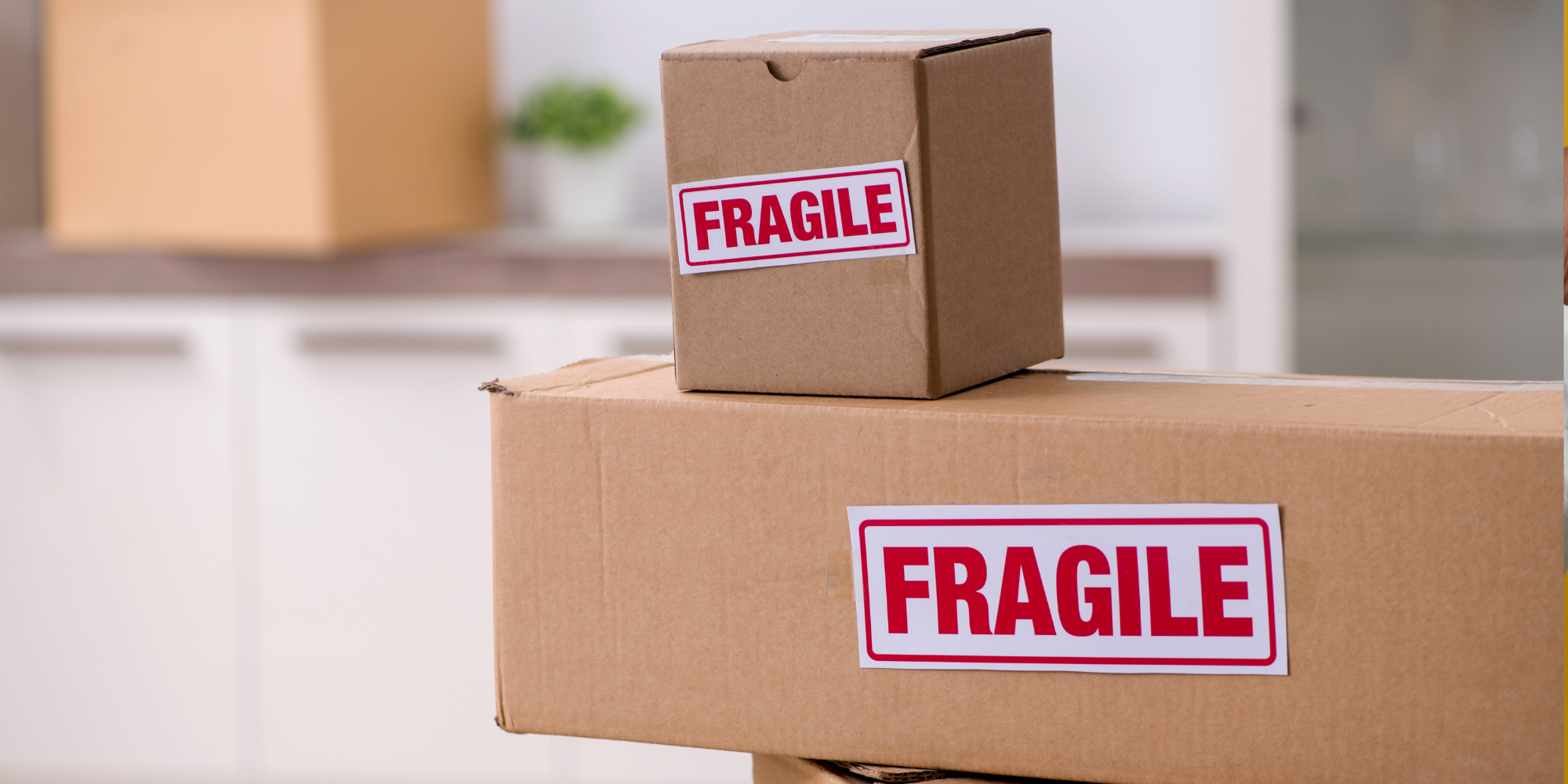
Packaging Requirements Vary by Product Type
Fragile items need six-sided boxes with 2 inches of cushioning on all sides using approved materials like bubble wrap or air pillows. Styrofoam peanuts, biodegradable fillers, and shredded paper are prohibited. Products must survive a 3-foot drop test. Read our complete guide to FBA packaging requirements.
Liquids require double-sealing to prevent leaks. Bottles over 16 ounces need poly-bagging even if double-sealed. Caps must be taped or shrink-wrapped closed.
Sharp items underwent major rule changes in April 2025: they now require hardened plastic or blister packs that resist cuts and punctures. Simple bubble wrap no longer complies. Non-compliant sharp products face immediate disposal with zero reimbursement.
Poly bags must be transparent, at least 1.5 mil thick, and any bag with an opening 5 inches or larger requires a suffocation warning in specific font sizes. Barcodes must remain scannable through the plastic.
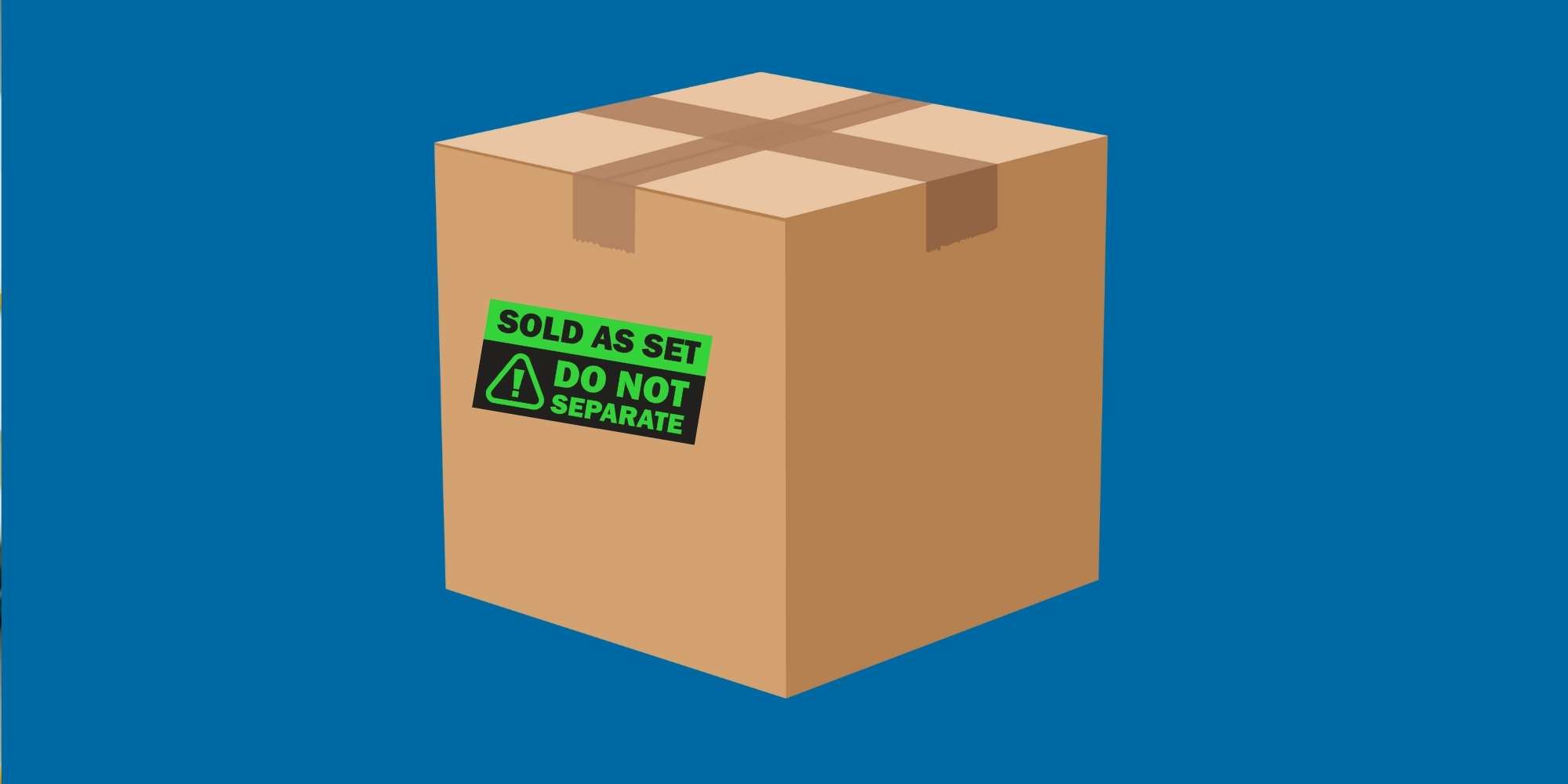
Box Specifications
Standard maximum weight is 50 pounds per box. Heavier boxes require “Team Lift” labels (51-100 lbs) or “Mechanical Lift” labels (100+ lbs). No single side can exceed 25 inches unless the item itself exceeds 25 inches.
Boxes must use corrugated cardboard with minimum 32 ECT (Edge Crush Test) rating and be sealed with strong packing tape in H-pattern across all seams.
Expiration Dates: A Common Mistake
All topical and consumable products—food, supplements, cosmetics, skincare, cleaning products—require expiration dates in specific formats (MM-DD-YYYY or MM-YYYY preferred).
Critical requirement: Products must have minimum 90 days remaining shelf life when Amazon receives them. For products intended for extended use like a 180-day supplement supply, you need 270+ days before expiration (180 days of use + 90 days buffer).
The expiration date must be printed in 36-point font or larger on master cartons, retail display units, and individual items. Amazon automatically removes and disposes of products within 50 days of expiration with no reimbursement.
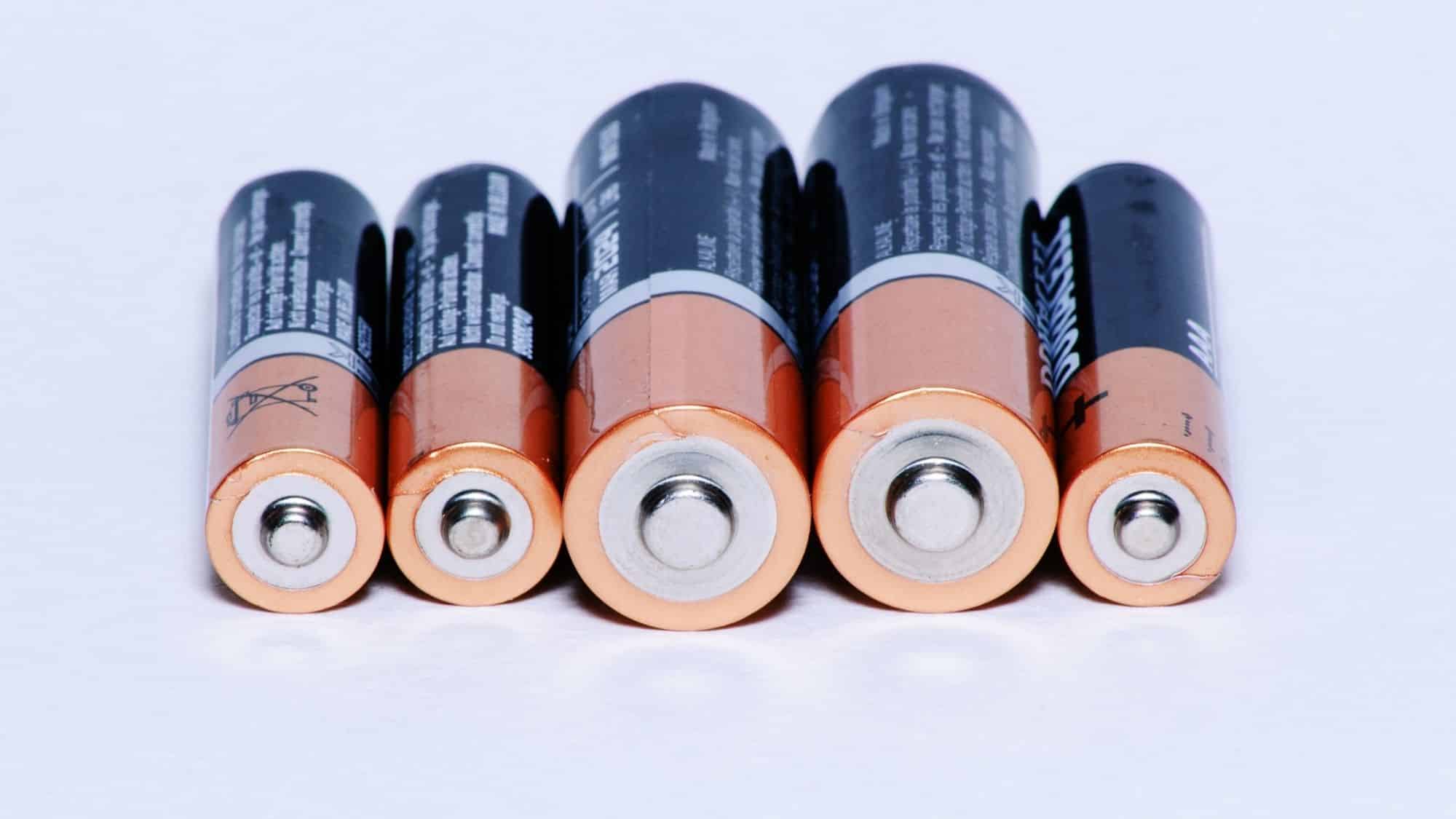
Hazmat Classification Catches Sellers Off-Guard
Products containing lithium batteries, aerosols, magnets, alcohol-based cosmetics, cleaning solutions, and countless other items qualify as dangerous goods. These require Safety Data Sheets (SDS), special labeling with GHS pictograms, and can only ship to designated hazmat-approved fulfillment centers.
Hazmat items face higher storage fees, cannot use Amazon Partnered Carriers, and currently have a waitlist for program approval.
Managing FBA doesn’t have to be a hassle.
Partnering with a 3PL like eFulfillment Service means you can focus on growing your business while we handle the prep. Request a Free Quote Today!
Understanding FBA’s True Costs
Amazon charges fees across multiple categories. Understanding the complete picture separates profitable sellers from those wondering where their margins disappeared. For a comprehensive breakdown, see our detailed guide on understanding FBA fees in 2025.
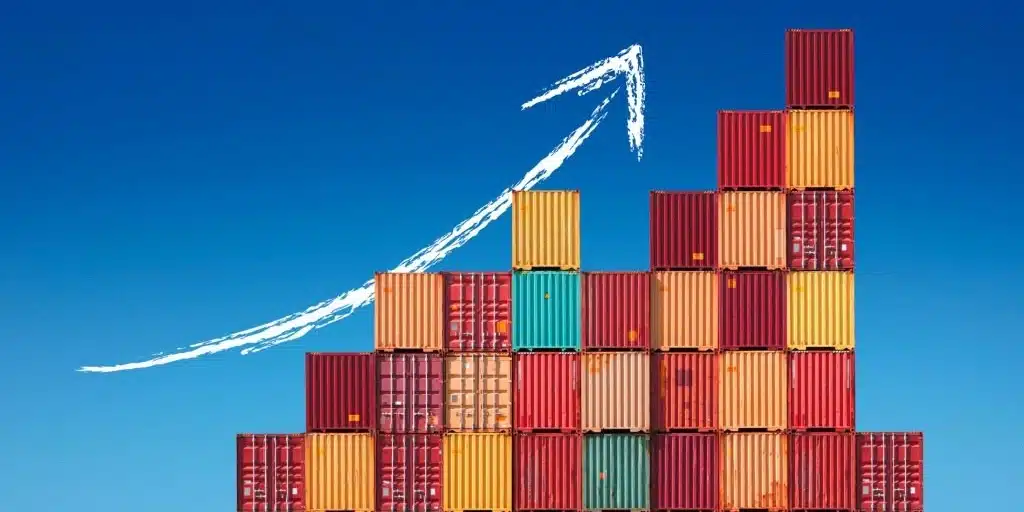
Fulfillment Fees
Fees vary by size tier and weight, ranging from $3.06 for a 2-ounce small standard item to $9.61+ for large bulky products. A typical 1-pound product costs approximately $4.99 to fulfill.
Good news for 2025: Amazon committed to no increases in US referral fees or FBA fulfillment fees, marking a shift toward “stability and simplicity.”
Storage Fees: The Seasonal Surprise
Storage fees operate on seasonal pricing that catches beginners off-guard. Standard-size products cost $0.78 per cubic foot monthly from January-September, then jump to $2.40 per cubic foot from October-December—a 3× increase during peak selling season. Learn how to minimize storage fees with strategic inventory management.
|
Storage Period |
Standard-Size |
Oversize |
|
January-September |
$0.78/cu ft |
$0.56/cu ft |
|
October-December |
$2.40/cu ft |
$1.40/cu ft |
A product occupying 5 cubic feet costs $3.90/month off-peak but $12/month during Q4.
Aged Inventory Surcharges
Products stored 181-210 days cost an additional $0.50 per cubic foot monthly. This increases progressively until items stored 365+ days trigger $6.90 per cubic foot monthly—often exceeding the product’s value.
A slow-moving item occupying 10 cubic feet aged 366+ days costs $69 monthly in aged inventory fees alone, plus regular storage fees on top.
Additional Fees to Track
Inbound placement fees (introduced March 2024) charge for distributing inventory across multiple fulfillment centers. Standard-size products average $0.21-$0.44 per unit.
Returns processing fees launched in June 2024. Apparel and shoes face flat fees of $1.65-$3.89+ per returned unit. Other categories only pay fees if returns exceed category-specific benchmarks.
Removal and disposal fees range from $0.25 to $0.40+ for standard-size items.
Real Example: What a $30 Product Actually Costs
- Product cost: $10.00
- Inbound shipping to Amazon: $1.00
- Amazon referral fee (15%): $4.50
- FBA fulfillment fee (1 lb): $5.00
- Monthly storage (2 months average): $0.15
- Advertising (PPC): $3.00
- Total costs: $23.65
- Net profit: $6.35 (21.2% margin)
That margin evaporates quickly with unexpected fees: aged inventory charges, return processing fees, or storage utilization surcharges. Successful sellers obsessively monitor fee reports and maintain Inventory Performance Index scores above 450 to avoid restrictions.
Frequently Asked Questions
How much does FBA cost to start?
Starting capital varies by business model:
- Retail arbitrage: $500-$1,000
- Wholesale: $2,000-$3,500
- Private label: $3,000-$5,000+
According to 2024 data, 25% of sellers started with less than $1,000 while 64% spent less than $5,000 total.
What happens if Amazon loses my inventory?
Amazon typically reimburses for lost or damaged inventory in their custody. However, the reimbursement landscape changed dramatically in March 2025—payments now base on manufacturing cost rather than retail price. Claims must be filed within 60 days with detailed documentation.
Critical: For shipments created after January 1, 2026, improperly prepped inventory receives zero reimbursement regardless of how it's lost or damaged.
Can I use UPC barcodes instead of FNSKU labels?
Technically yes, but it's strongly discouraged. Using manufacturer UPCs enables commingling—Amazon pools your inventory with all other sellers. When customers order, they may receive another seller's inventory (which could be counterfeit, expired, or damaged). You'll receive complaints for products you never sent.
Amazon announced plans to phase out commingling by end of 2025, making FNSKU labels the clear best practice.
How do I avoid long-term storage fees?
Monitor your Inventory Age report weekly. Set alerts at 150 days. Before hitting 181 days, run promotions, create bundles, increase advertising, or initiate removal orders. Removal fees are one-time costs versus aged inventory surcharges that compound monthly.
What's the best FBA prep solution after Amazon stops offering it?
It depends on your volume:
- Less than 50 units monthly: In-house would more than likley sufficiant
- 50+ units monthly: Third-party prep centers offer expertise and scalability
- Private label: Manufacturers can sometimes apply labels before shipping
For most sellers, professional FBA prep service partners provide the optimal balance of cost, accuracy, and convenience.
How quickly does inventory become available?
During off-peak periods, expect 2-5 days from delivery to available for sale (1-2 days receiving, 1-3 days check-in). During Q4, check-in extends to 5-7+ days.
Add prep center processing (1-2 days) and shipping transit (1-5 days). Total timeline: 3-7 days off-peak, 7-14 days during Q4.
What products are restricted or prohibited for Amazon FBA?
Amazon restricts categories requiring prior approval: topical products, dietary supplements, jewelry, watches, certain grocery items, toys, and more. Prohibited items include alcohol, live animals, offensive materials, and recalled products.
Dangerous goods (hazmat) require Safety Data Sheets and program enrollment. Always check Amazon's restricted products list before sourcing inventory.
How do returns work with FBA?
Amazon handles the entire returns process automatically. If items are sellable, they return to your FBA inventory. If unsellable, they go to unfulfillable inventory where you can create removal orders.
Return rates average 5-17% depending on category, with apparel reaching 30%. Factor returns into your margin calculations.
Is Amazon FBA worth it in 2025?
For serious e-commerce sellers, yes. The Prime badge delivers 74% conversion versus 13% for non-Prime listings—a 5.7× difference. Access to 200+ million Prime members provides massive advantages.
However, success requires mastering compliance, managing fees strategically, and adapting to changes like the January 2026 prep service discontinuation. Sellers who approach FBA professionally—treating it as a business requiring optimization—consistently achieve profitability, with 86% reporting profits.
Your FBA Action Plan for 2025 and Beyond
Inventory Optimization
Maintain 4-12 weeks of supply as your sweet spot. This avoids low-inventory fees (triggered below 28 days) and storage utilization surcharges (triggered above 26 weeks). Set 150-day alerts for aging inventory. Learn more about replenishing FBA inventory effectively.
Storage Fee Management
Send Q4 inventory to arrive just-in-time rather than warehousing large quantities starting October 1. Consider using a third-party warehouse as a buffer, drip-feeding smaller shipments to Amazon every 2-3 weeks to minimize peak storage fees.
Solve the January 2026 Prep Challenge
If you haven’t established an alternative prep solution, act now. Options include:
- Building in-house operations (requires equipment, training, staff)
- Arranging supplier/manufacturer prep (works well for private label)
- Partnering with professional prep centers (optimal for most sellers)
Test your new process with small shipments now while stakes are low.
Q4 Preparation
Manufacturing orders for Q4 should be placed in August-September to account for extended production times. Check our guide on holiday FBA prep deadlines for critical timelines:
- September for Prime Big Deal Days
- October 20-30 for Black Friday/Cyber Monday
- Various December cutoffs for holiday season
Always aim to beat deadlines by a week minimum as insurance against delays.
Compliance Excellence
Create checklists for every product type documenting exact prep requirements. Train anyone handling inventory on Amazon’s standards. Spot-check shipments before they leave. Take photos of properly prepped boxes as reference documentation.
Technology and Tools
Use Amazon’s FBA Revenue Calculator before listing any product. Subscribe to inventory management software that tracks sales velocity, calculates restock points, and alerts you to issues. Consider reimbursement audit services that automatically identify lost or damaged inventory eligible for claims.
Financial Discipline
Track true profitability per ASIN including all fees, advertising costs, and returns. Run margin calculations monthly and ruthlessly eliminate underperformers. Your storage capacity is finite—dedicate it to winners.
The Path Forward: Preparing for FBA’s New Era
Amazon FBA transformed e-commerce by democratizing access to world-class logistics. Solo entrepreneurs compete with established brands using the same fulfillment network and delivery speeds. But FBA has evolved into a more complex, fee-heavy, compliance-driven platform where strategic operators thrive while casual approaches fail.
The January 1, 2026 prep service discontinuation represents Amazon’s clearest signal: they’re focusing on core fulfillment operations and transferring ancillary responsibilities to sellers. Those who adapt by establishing robust prep solutions, mastering compliance requirements, and optimizing inventory management will gain competitive advantages.
Success demands viewing FBA as a business system requiring continuous optimization. Monitor performance metrics weekly. Audit fee reports monthly. Stay current on policy changes. Test new products conservatively before scaling.
The data supports FBA’s viability: 58% of sellers reach profitability within their first year, with many building six- and seven-figure businesses. But those success stories share common traits—meticulous planning, strategic inventory management, rigorous compliance, and partnering with experts for specialized functions.
Your window to prepare for January 2026 is closing. Whether you build in-house capabilities, arrange supplier prep, or partner with professional services, act now. Test your processes with small shipments, identify issues while stakes are low, and finalize systems before the deadline.
The Amazon FBA opportunity remains massive for sellers who approach it strategically. The Prime badge, unmatched logistics network, and access to hundreds of millions of high-spending customers create advantages no other platform matches. Success in 2025 and beyond belongs to sellers who master the details, adapt to changes, and build systematic operations that scale profitably.
Ready to talk fulfillment or FBA Prep solutions? The team at eFulfillment Service is happy to help answer questions and set you up for fulfillment success. Here’s to fewer headaches and more growth ahead!


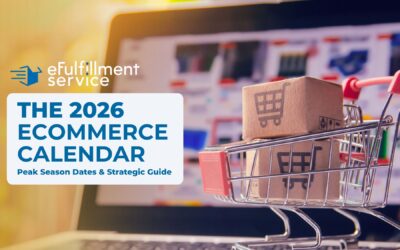

0 Comments